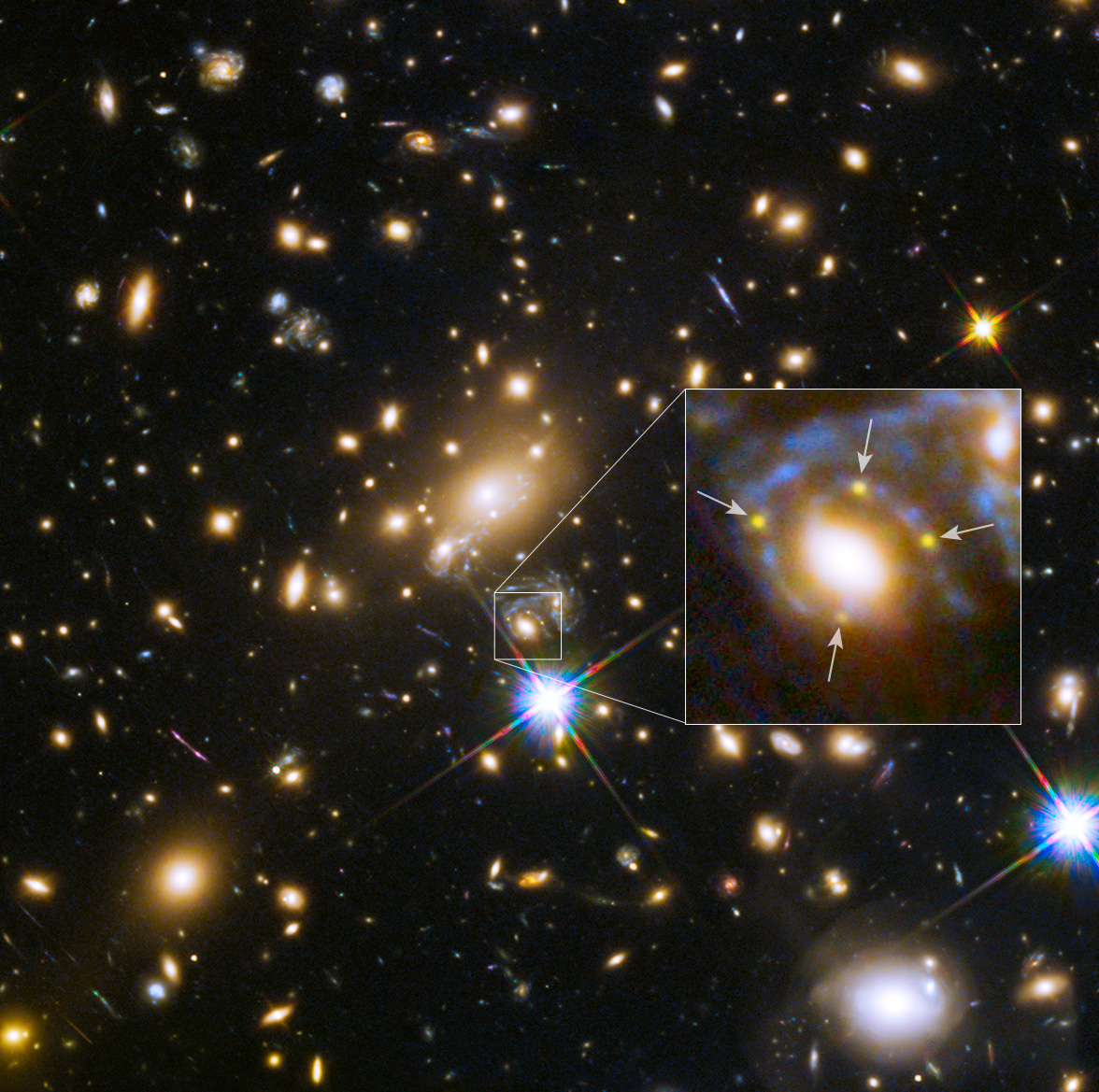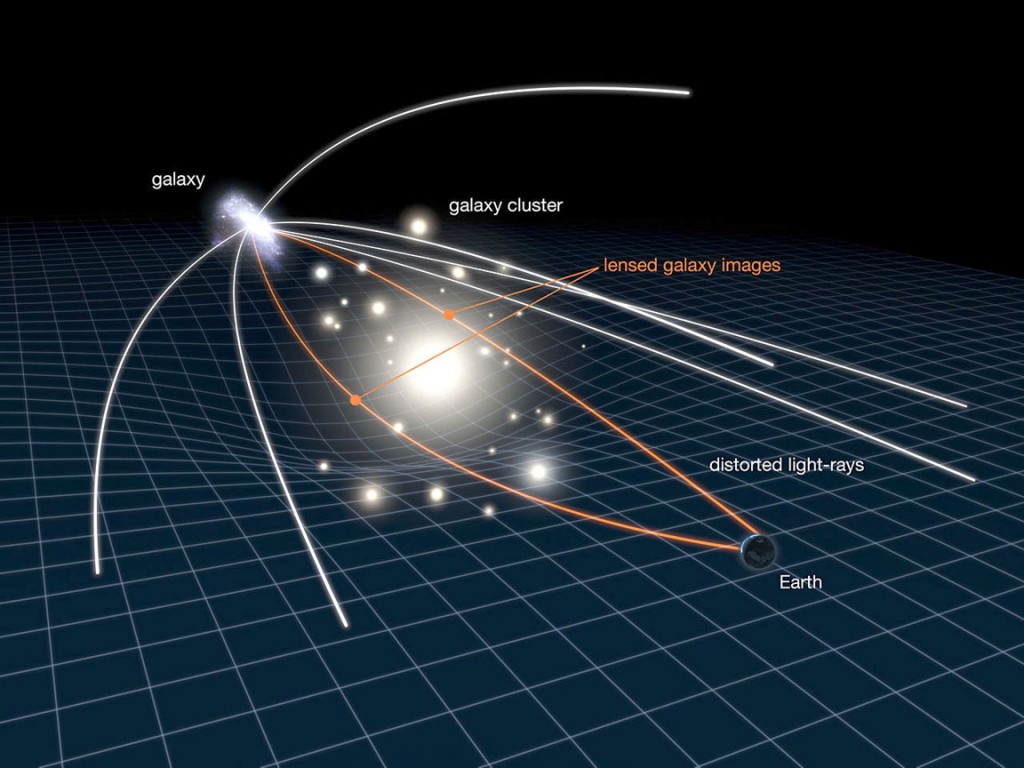Even I was blown away when I saw this image a friend sent me. Gravitational lensing is a rare occurrence, and a supernova is a rare occurrence, so to see a supernova in a gravitationally lensed galaxy deep within the universe is exceptional. So exceptional that it was spotted for the first time ever in a Hubble image of the distant universe.

That dot in the image is a single supernova in a very distant galaxy, split into four images by the gravitational lensing of the galaxy cluster in front of it. But there is also a secondary lensing effect from a single elliptical galaxy directly in front of the supernova, giving us multiple images of our multiple images. Because the cluster and the distant galaxy are not perfectly aligned, some of the light from the distant galaxy has to travel further to reach us, so the four images of the supernova are actually snapshots of different times during the explosion. So how does any of this work?

Gravitational lensing of a distant galaxy occurs when there is a large mass, usually a giant cluster of galaxies, between Earth and the galaxy. Rays of light, images of the distant galaxy are moving through space in all different directions, but the immense gravity of the foreground cluster tugs on the fabric of space-time and curves the path of the light toward Earth. Depending on the orientation of the cluster and its distribution of mass, we can see multiple images of a distant galaxy projected, as if looking through a lens. And because some light rays will have to travel further to reach Earth, lensed images show us different times in the galaxy’s history.
https://www.youtube.com/watch?v=osleSdLEiNo
Watch the animation above to get an idea of how a gravitational lens works. If the galaxy being lensed happens to be directly behind the galaxy cluster, we can have a perfect lensing event, known as an Einstein ring.
In the case of the recently observed, the secondary phenomena, with lensing of an already lensed object, shows us more than just the first four lensed images, giving us the ability to study the supernova as different times during it’s evolution.

Now that we understand what’s going on, what can we possibly learn from such a rare event?
By looking at how multiple galaxies are lensed by the foreground cluster, and by adding in the time differences observed in the supernova, we can gain an accurate understanding of the dark matter in the galaxy cluster. Essentially we are seeing dark matter, in a manner of speaking.
It also gives insights into the strength of gravity over the largest scales in the universe. Does it remain constant? Or does gravity act differently than it does on the smaller scale of our planet and solar system?
The supernova can also be used to determine the distance to the distant cluster, which can also help us pin down the distribution and even the density of dark matter in the foreground image.
The final amazing piece of science is that we can model the lensing event and predict where the images of the distant galaxy will appear in the near future. Amazing what we can gather from a single image. Proof that if we are intelligent enough to understand concepts of the universe – gravity, light, optics, supernovae – we can develop techniques to understand the amazing events we observe.
